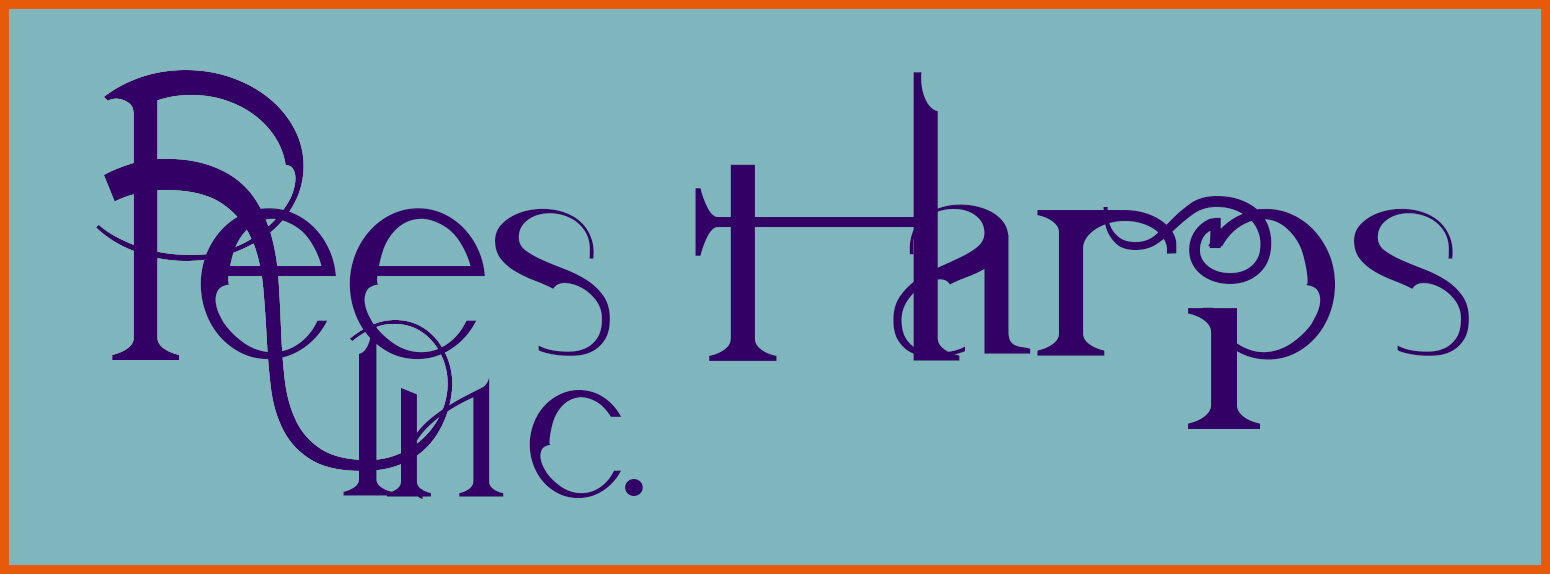Strings properly passing over sharping lever frets, up past the bridge pins and around the tuning pins
Breaking Strings
Strings can break for any number of reasons some of which you can avoid but there are two important things to know. The first is that strings can break completely randomly for no apparent reason. The second is that they have a sense of humor, they know when it's five minutes before an important concert. (I swear, you can hear them giggling.)
There are things which you can do to minimize breakage
1. Strings often break at the tuning pin because there were not enough wraps. At least three full wraps of the string around the pin are necessary in order to generate enough friction that the string will hold without placing undue pressure on the spot where the string passes through the hole in the pin and turns sharply in order to be wrapped.
2. When a harp knot is being tied in a string, sometimes the string can get kinked and break at that spot.
3. Occasionally, with wrapped strings, the wrap or the knot at the top of the wrap can become damaged. Usually this happens in the process of replacing a string so be especially careful about handling wrapped strings and never cut through the wrapped part for any reason.
4. There are those harpists who simply overplay their harp, having transferred technique from a more heavily strung instrument to their lighter harp without making the necessary adjustment. This will cause damage in a variety of places in the harp, not the least of which is the strings. Remember - harp strings are not designed for archery.
5. If you have a single string which keeps breaking either at the bridge pin or at the eyelet, call us and we will send you a replacement bridge pin or eyelet. We hear that once in a great long while someone will get a pin or eyelet which has a rough spot. We, quite honestly, have not had this issue but if it happens to you we are happy to replace the problem piece of hardware. (Should this happen we will walk you or your local guitar or violin repair luthier through the replacement process.)

